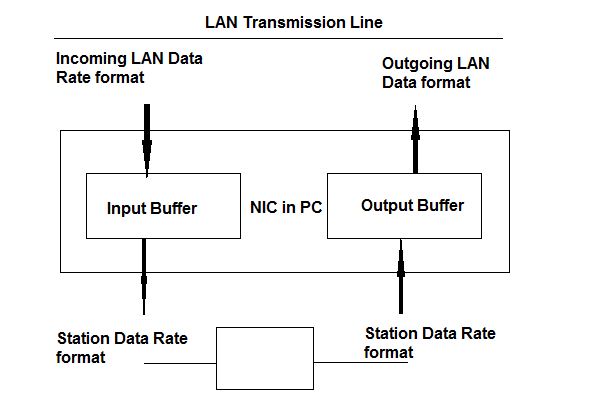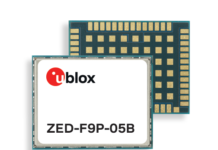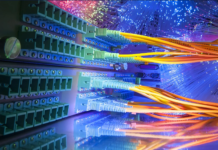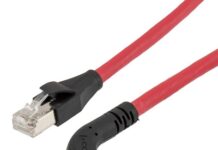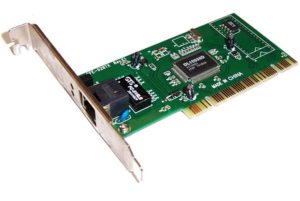
A Section of cable connects a microprocessor based LAN access Controller, or network access unit (NAU), in a station with a media access unit (MAU). The MAU connects directly to the shared medium so that it can broadcast and receive information over the network cable. The NAU coordinates the transfer of information between the station and the network. It contains the hardware, software and control information stored on read-only memory (ROM) and usually resides on a circuit card called the network interface card (NIC). Since the elements attached to a network usually come from several manufacturers, they may not conform to a common data transmission scheme. Thus, in addition to providing media access another function of the NIC, if necessary, is to transform the data rate and transmission format of the attached device to that of the LAN, when data arrives for the attached station, the NIC temporarily stores it in an internal buffer while it is converted to match the data transmission characteristics of the LAN. Other function s of the NIC include timing, buffering data from the attached equipment until medium access is achieved, scanning each message on the medium to see if it is destined for its attached device, and monitoring the incoming message for errors.
A system’s physical address is a bit pattern encoded on its Network Interface Card (NIC). Each network interface card has a unique address that distinguishes it from any other Network interface card. Whenever the packet must cross from one LAN to another to reach its destination, the DA field contains the physical address of the router connecting the current LAN to the Next LAN. When the packet reaches the target network. The DA field contains the physical address of the destination station.
